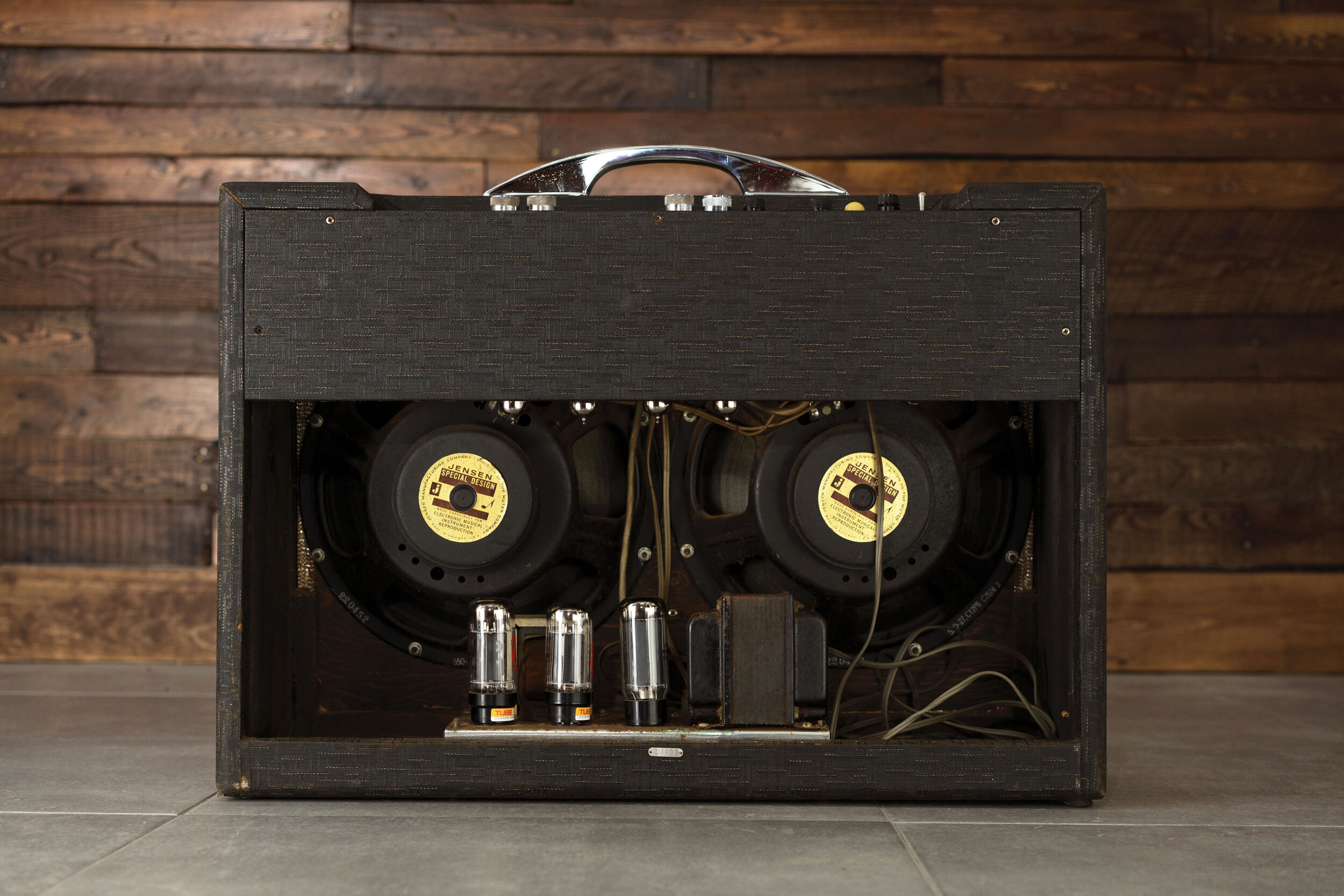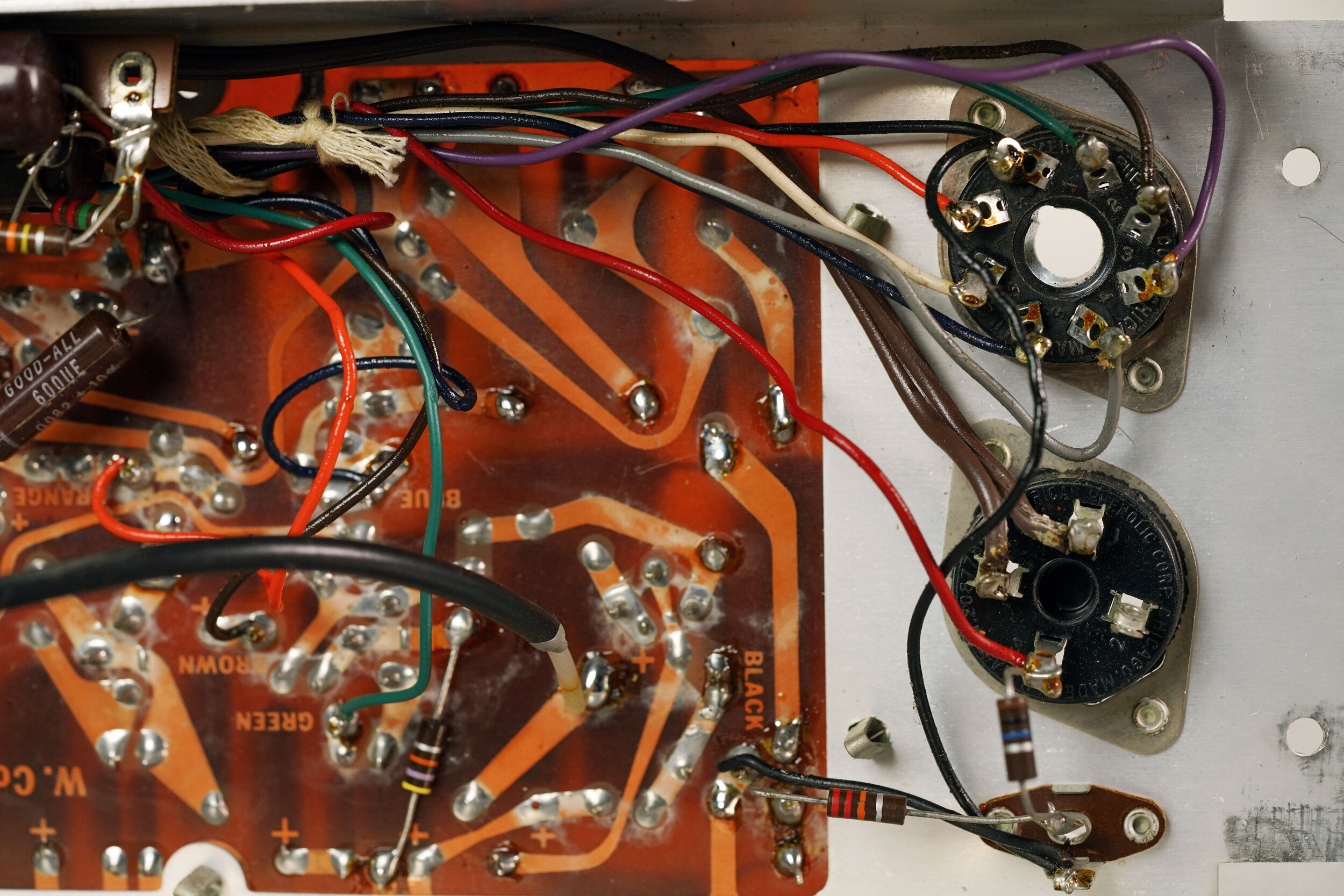Common Amplifier Malfunctions: The amp smells like it's burning.
There are two major reasons why an amp might smell like it’s burning:
The amplifier is covered in dust, which is in fact burning from the heat of the tubes
The amplifier is malfunctioning and a component is burning
If you have any doubt whether your amplifier is burning, you should turn it off and unplug it right away. However, you may be asking yourself, am I overreacting? Is it correct to be concerned about this burning smell? Or do old amps always smell this way?
Checking and Changing the Fuse in Your Tube Amplifier
If your tube (or solid state) amplifier is not “turning on,” the cause of this problem could be a blown line fuse. The line fuse, also referred to as a mains fuse, is the fuse that stands between the main AC power and your power transformer. In an otherwise functional amp, the main fuse can and will blow when there is a problem between the wall outlet and your power transformer (PT). A fuse can also blow when there is a short somewhere in the amp. In either case, the fuse is doing its job when it blows and is protecting the amp by stopping it from running when there is a problem present that could harm the amp’s circuit.
How Vacuum Tubes Work
All tubes follow the same basic principles. Inside a tube’s glass enclosure, you have 1) a vacuum and 2) at least two electrodes (but often more, depending on what type of tube we’re talking about). Each electrode has a specific job: either releasing electrons, attracting electrons, or slowing down or speeding up the flow of electrons. We’ll talk about these jobs later. For now, the main thing that tubes are intended to direct electrical current from A to B in some way that is useful to the circuit.
Is it safe to troubleshoot my amplifier?
Tube amplifiers (and many solid state amplifiers) contain high voltages. Like any reasonably dangerous household object, you should certainly respect your tube amp. However, you don’t have to be afraid of it. If the amp is unplugged and the chassis is screwed in, it is safe to perform basic maintenance like replacing mains fuses and swapping tubes. In fact, fuses and tubes are accessible from the chassis because they are intended to be replaced by the user.
Common Tube Amp Malfunctions: My amp makes no sound.
If your amp makes no sound, it is first important to define what you mean by “no sound.” To that end, the first test you should perform is whether you can hear anything coming from the speakers. (This is, of course, after you have eliminated the possibility of trivial problems.)
Listening to what (if anything) comes out of the speakers can help you isolate the problem to specific parts of the circuit. If you hear no sound coming from the speakers — including hum, hiss, reverb crash, input cable pop, or any other incidental, non-musical sounds — the problem could be the speaker itself. But, if you hear non-audio sound coming from the speakers, the problem is likely, although not guaranteed, to be a fault in the preamp section of the circuit.
How to Troubleshoot Any Amplifier: Start with trivial problems.
The most efficient way to troubleshoot an amplifier is to investigate common trivial problems first. Complicated problems can have complicated solutions, but trivial problems can often be solved in a matter of minutes. By starting with potential trivial problems, you can cover a lot of ground quickly, without unsoldering a single connection. This reduces wear-and-tear on your amplifier, saves time, and prevents you from replacing components that still have plenty of life left in them.
On Cathode Bypass Capacitors
Cathode bypass capacitors are not absolutely necessary in a circuit. However, their presence or absence in an amplifier affects three things: gain, frequency response, and hum.
If you feel that your amp is lacking in any of these aspects, determining whether the cathodes are bypassed is a good place to start.
Wurlitzer 120/700 Amplifier: Circuit Analysis
The Wurlitzer 120 amplifier represented a total redesign from the previous Wurlitzer model, the 112. The upside is that the amp is a lot smaller, so it fits nicely in the smaller, lighter 120 cabinet. The downside is also that the amp is a lot smaller. It’s missing many of the features that make the Wurlitzer 112 so magical. Regardless, it’s still a great vintage tube amp with a lovely, classic tone.
How to Replace Vintage Filter Capacitor Cans
The filter capacitors in many amps are mounted in a metal can, which can be an obstacle to successfully recapping the amp. These days, filter cans are only made in a limited values, so it's hard to find the exact match. Mounting the caps outside of the can is another option, but finding the space can be tricky. Removing the can can leave a giant hole, which can allow dust to enter the chassis over time. So, what's the best way to replace can-style filter capacitors?
How to Fix Hum in Your Wurlitzer Electronic Piano (Or Other Vintage Amp): Part II
In Part I of our guide on fixing hum, we listed some easy fixes. In Part II, we’ll go into further detail on techniques that require some prior electronics experience to execute. It’s worth checking out Part I first, because it listed some simple, non-invasive things that you should always be tried before diving into the amplifier’s circuitry. For the purposes of this article, we’ll assume that you already tried everything in Part I. This includes:
How to Fix Hum in Your Wurlitzer Electronic Piano (Or Other Vintage Amp): Part I
Before we start, a disclaimer: hum should be addressed on a case-by-case basis, because every vintage amp is special and degrades in its own way. What cures one amp may not work for another. That said, reading this guide should give you a good starting point on how to address your own hum problems. This guide is pretty basic and going to assume that the only piece of test equipment that you have is a multimeter.
On Vacuum Tube Heaters
The heaters of your vacuum tubes are one of the most critical parts of your amplifier. A well-designed heater circuit is quiet and unobtrusive: truly an unsung hero of any quality amp. On the other hand, flaws in a heater circuit can produce noise.
How is a Wurlitzer tube amp different from a guitar amp?
Wurlitzer tube amps are in fact very similar to guitar amps.
But before we talk about that, let’s back up a little. The Wurlitzer itself is very analogous to an electric guitar: the heart of both instruments is a pickup that converts vibration into an electrical signal that is ultimately sent to an amplifier. In a guitar, the amplifier is almost always external, but a Wurlitzer’s amplifier is tucked into the body of the instrument.
The Music Man 130HD 410 and Why It's So Amazing
It’s impossible to talk about Music Man amps without bringing up their creator, Leo Fender. And once we start talking about Leo Fender, we can’t help but think of the famous Fender tube amplifiers he also created. And perhaps studying Fender tube amps and Leo Fender would be a great exercise to help understand & appreciate just how awesome Music Man amps are.
How to Convert a Gibson GA-5 to a Fender 5F1 (Or Vice Versa)
We’ve discussed the differences between the GA-5 and 5F1, both historically and in terms of the circuit. Here’s how one circuit could be converted to the other, in list form.
In Restoration: Dynavox Rebuild
This Dynavox was originally a so-called widowmaker amplifier. We completely rebuilt it with all-new components, installed a power transformer, and revised the circuit to eliminate the obsolete widowmaker tubes. It is now a safe, functional 1.5 watt practice amplifier. It can be used alone for bedroom practice, or plugged into a second amp for interesting tube overdrive tones.
Here’s some details on how we redesigned this amp.
What is a widowmaker amplifier?
A widowmaker amplifier has no power transformer or fuse. Instead, the two-prong, non-polar power cord is wired directly to the rectifier tube. It is very unsafe, because under even minor failure conditions (such as a shorted capacitor or even - in some models - plugging the power cord in backwards), the mains voltage might end up on the guitar strings and the user will be shocked/electrocuted.
On the plus(?) side, power transformers are expensive so widowmaker amps could be manufactured and sold at a lower price. This ensured that every aspiring guitarist in America could own a low-fi death trap if that’s what they really wanted.
In Restoration: Vintage Sears Hi Fi Amp
This vintage tube hi-fi-turned-guitar amp is one of our favorite past restorations.

















